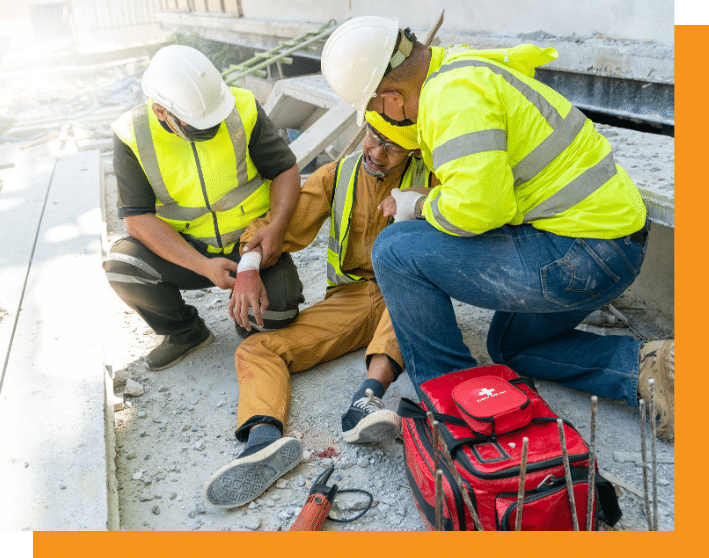
Slips, trips, and falls are among the most common and dangerous construction site accidents. These incidents can lead to severe injuries, costly medical expenses, and even fatalities. Therefore, accident prevention is critical for maintaining a safe working environment. This blog will explore practical tips and strategies for preventing these accidents, focusing on hazard prevention, slip and fall prevention, employee training, and the use of safety equipment.


Construction sites are rife with potential hazards that can lead to slips, trips, and falls. Common causes include:
The consequences of these accidents are severe, ranging from minor bruises to significant injuries like fractures and head trauma. Additionally, these incidents can lead to financial losses due to medical costs and decreased productivity. For instance, a construction company in California was fined $150,000 after poor housekeeping led to several trip-and-fall incidents, including a severe ankle injury.
One of the first steps in hazard prevention is identifying areas prone to slips, trips, and falls. Inspect critical areas such as walkways, staircases, workstations, and high-traffic zones regularly. Using hazard identification tools and checklists can help ensure thorough inspections. Pay particular attention to areas where liquids are used or stored, as these are often the most hazardous.

Effective slip and fall prevention involves a combination of good housekeeping, maintenance, and appropriate surface treatments. Here are some practical measures:
Employee training is crucial for preventing slips, trips, and falls. Educate employees on recognizing hazards, safe walking practices, and reporting potential risks. Training sessions should cover the importance of wearing appropriate footwear, navigating slippery surfaces, and maintaining a tidy workspace.
Creating a culture of safety within the organization is equally important. Encourage employees to report hazards and near-misses promptly. Recognize and reward safe behavior to reinforce the importance of safety.

Safety equipment can significantly reduce the risk of slips, trips, and falls. Essential equipment includes:
Despite the best preventive measures, accidents can still happen. Therefore, it is essential to have emergency response plans in place. Develop and practice these plans regularly, ensuring all employees know the procedures. Ensure first aid kits are readily available, and train employees in basic first aid and injury response protocols. Ensuring easy access to emergency exits is also vital.

Regular safety audits and inspections are necessary to continuously identify and address potential hazards. Analyze accident reports and data to understand the causes of incidents and improve safety measures accordingly. Implementing feedback from these analyses helps adapt and enhance safety protocols.
Preventing slips, trips, and falls at construction sites requires a comprehensive approach involving hazard prevention, slip and fall prevention, employee training, and the use of safety equipment. By prioritizing these measures, construction companies can significantly reduce the risk of accidents, ensuring a safer and more productive working environment.